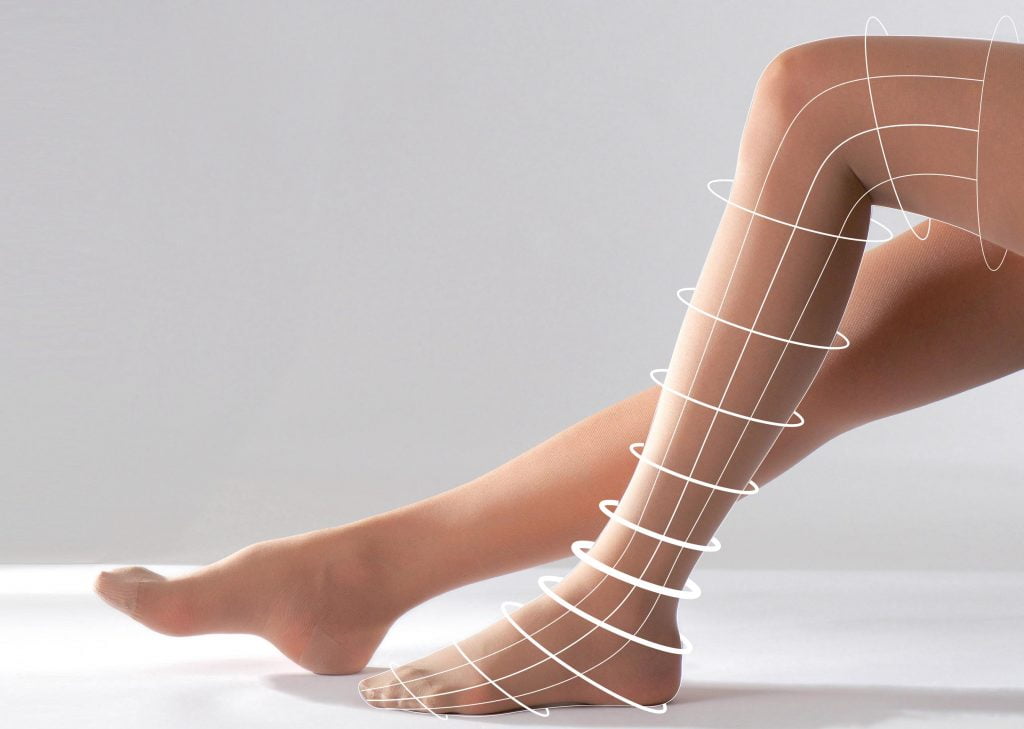How To Choose the Right Compression Class
CHOOSE A COMPRESSION LEVEL / CLASS
Understanding Compression Levels
If you’ve looked around for compression stockings, you may have come across the term ‘levels’ or ‘classes.’ To put it simply, greater the compression level or class, tighter the fit and pressure. ‘Graduated’ compression means that pressure gradually decreases as you go further up the leg. Compression stockings have maximum pressure at the ankles, which progressively reduces as you move towards the top. This helps in pushing the blood back up to the heart, aiding circulation.
‘Levels’ or ‘classes’ are measured in mmHg (millimeters of mercury), which is also the measurement of blood pressure.
Support Stockings Versus Medical Compression Stockings
Even though people widely use the words support and compression stockings interchangeably, the principles of the two differ.
Support stockings have mild graduated compression and serve more as a preventive measure. These can be worn by perfectly healthy adults to maintain leg health and reduce the risk of developing vein-related issues. Medical Compression stockings, on the other hand, are produced under strict medical and technical specifications to provide precise graduated compression. Often prescribed by medical practitioners, they’re used for the treatment of venous and lymphatic disorders.

Choosing the Correct Compression Level
Stockings with low compression levels do not require a prescription and can be worn by anyone who wants to prevent venous disorders and relieve mild symptoms.
Compression stockings with higher levels – 23 mmHg to 46 mmHg are generally prescribed by doctors who determine the right level for your needs.
Below is a general guide to help you understand Sigvaris compression classes and their uses. While this guide gives a quick understanding of the classes, it is not binding. The need and severity of your issue will rightly determine the compression class you need. Talk to your doctor about the right compression class for you.
Support Stockings
Mild compression, can be worn by anyone
-
- Relief from tired, achy legs and minor swelling
- Effective during travel and long periods of sitting and standing
- Preventive measure for those at risk of developing venous disorders
- Ideal for those looking to stay fit and maintain leg health
Compression Class 1 (18 – 21 mmHg)
Moderate compression, first level in medical compression
-
- Relief from symptoms of mild varicose veins
- Preventive measure for pregnant women at risk of developing varicose veins
- Relief from swelling and tired legs during pregnancy
- Prevention of ‘economy class syndrome’ or deep vein thrombosis during travel
- Preventive measure for immobile patients at risk of developing thrombosis and embolism
Compression Class 2 (23 – 32 mmHg)
Firm compression, most commonly prescribed compression level
-
- Relief from chronically painful, heavily fatigued legs
- Relief from symptoms of pronounced varicose veins with swelling
- Relief from symptoms of severe varicose veins during pregnancy
- Post-surgical applications
- Management of healed venous ulcers
Compression Class 3 (34 – 46 mmHg)
Very firm compression, prescribed for advanced conditions
-
- Healing active and recurring venous ulcers
- Relief from symptoms of serious cases of varicose veins
- Management of severe post-traumatic oedema
- Management of DVT and post thrombotic syndrome
- Relief from symptoms of lymphoedema
* If you suffer from peripheral arterial disease, congestive heart failure, advanced peripheral neuropathy or rheumatoid arthritis (RA), please consult your doctor before wearing medical compression stockings

